Add Aswan to your itinerary and spend a morning at Abu Simbel.
Pharaoh Ramesses II embarked upon one of the most ambitious construction programs in Ancient Egypt. But it was his temple in Abu Simbel, far from the judgemental eyes in Memphis and Thebes, in the southernmost part of the Egyptian Empire that he gave his megalomania free reign.
There’s a discrepancy in the dating of the site, but it took place over two decades, either 1264-1244 BCE or 1244-1224 BCE.

“The Abu Simbel temples were chopped into 16,000 or so blocks — and reassembled like a giant-sized puzzle on an artificial mountain 200 feet higher.
Carved into the side of a sandstone cliff, Ramesses II’s temple to his own awesomeness immediately impresses the visitor with its four massive seated colossi of the king that rise 69 feet high. One, sadly, has lost its torso, which now lies shattered at its feet.

Four seated colossi of Ramesses II are larger than life, at 69 feet tall.
A carving of Ra-Horakhty, the conflation of two sun gods (noticeably smaller than the statues of Ramesses II), stands in the center of the façade. A line of baboons decorates the top of the exterior, which faces east, with the rays of the rising sun bathing the frieze in light. Baboons were associated with the sun, as their cries were thought to greet the dawning of a new day.
Inside, the first hall contains eight giant-sized replicas of the pharaoh in the Osiride style, meaning they have their arms crossed over their chests to portray Ramesses as Osiris, lord of the underworld.
We don’t call him Ramesses the Great for nothin’.

The first hall features eight giant statues of the pharaoh as Osiris, the god of the underworld.

Ramesses II was quite the egotist — his image is all over the temple.

It’s crazy to think that the temple is around 3,200 years old!
In theory, though, the Great Temple was dedicated to Ra-Horakhty, Amun (creator god of Thebes) and Ptah (creator god of Memphis). Oh, and the deified Ramesses II rounded out the grouping, of course.
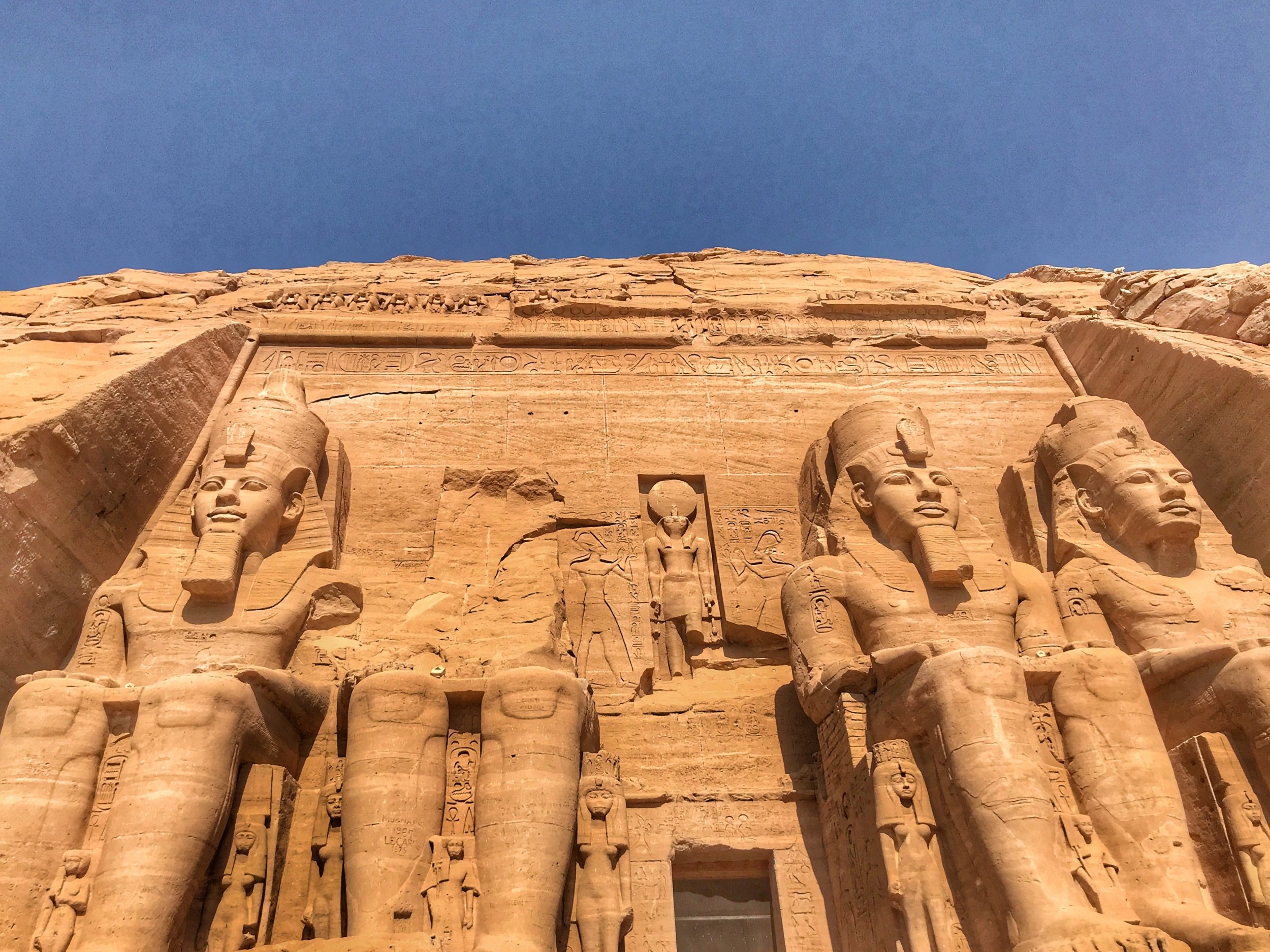
It’s a family affair at Abu Simbel — those smaller statues at the bottom are Ramesses’ wife, mother and children.
Building the temples in the southernmost part of the country, facing Nubia, also acted as a deterrent to any invaders coming from that direction. They would see these massive statues of their enemy and would hopefully be frightened away.
The temple was a genius stroke of propaganda. The famous Battle of Kadesh, in which the Egyptians fought the Hittites, actually ended as a stalemate. But that didn’t stop Ramesses from declaring a victory and commissioning numerous carvings portraying himself as the protector god and showcasing his “triumph” over one of Ancient Egypt’s archenemies.
Other reliefs on the interior walls are decorated with scenes showing the king defeating the Syrians, Libyans and Nubians, presenting prisoners to the gods.

The reliefs inside showcase Ramesses’ military “victories,” including the famous Battle of Kadesh, which actually ended in a draw.

Abu Simbel was built on the border of Nubia as a deterrent to invasion, and shows a line of Nubian slaves.
At the very back of the temple, carved deep into the mountain, lies the innermost sanctuary, the holy of holies. It houses four statues. There are the three great state gods of the late New Kingdom: Ra-Horakhty, Ptah, Amun-Ra and, no surprise here, the deified Ramesses.
Sunlight bathes three of these gods on two days only: February 21 and October 21 (some sources say it’s the 22nd), one of which is thought to be Ramesses II’s birthday, the other possibly his coronation day. The figure of Ptah, associated with the underworld, always remains in partial shadow.
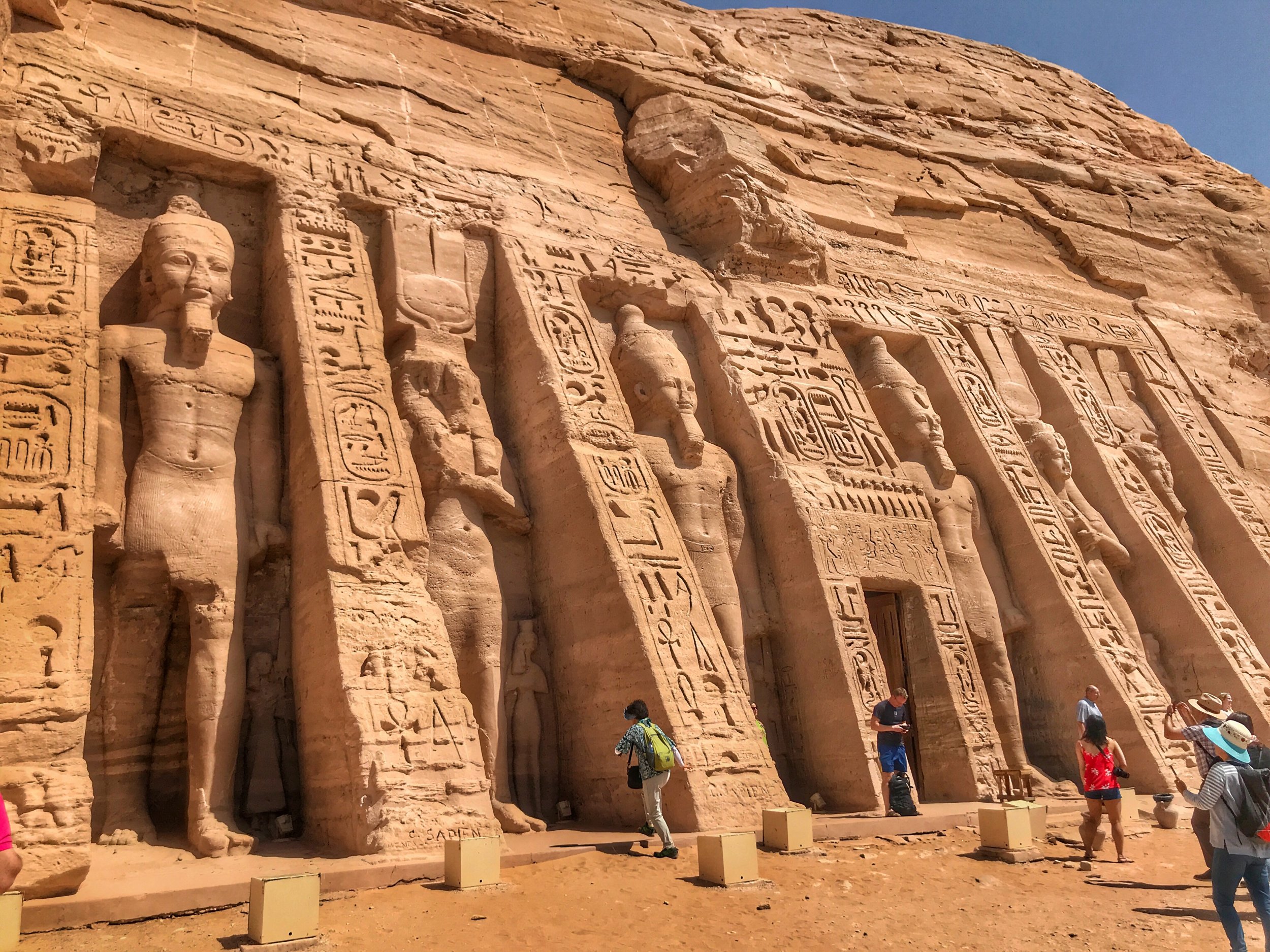
The temple next door is fit for a queen — in fact, it’s dedicated to Ramesses’ wife, Nefertari.
Nefertari’s Temple to Hathor
Nearby is another temple, dedicated to the goddess Hathor, though it really seems to be for Nefertari, Ramesses II’s chief wife (pharaohs were polygamous, with a harem full of spare wives). Even here Ramesses insisted upon sharing the spotlight: Out front are two 33-foot-tall statues of the queen, along with two more of the king. Diminutive figures of their children round out the family portrait.
What was groundbreaking at the time, though, was that Ramesses II portrayed his favorite wife as equal to him — her statues on this temple are the same size as his.
Inside, while it’s still impressive, the pillared hall didn’t get as much attention as the one next door. The Hathor columns, a popular style at the time, where the pillars are topped with the head of one of the most revered deities in the Egyptian pantheon, look downright amateurish in comparison. Hathor, considered the first goddess, was depicted with bovine features. The heads atop the columns all have cow ears.

Don’t have a cow! These Hathor columns aren’t as ornate as those in Ramesses’ temple next door.
On the rear wall, Hathor is depicted as a cow emerging from a mountain, with the king standing beneath her chin. Nefertari is shown participating in the divine rituals — on equal footing with Ramesses.
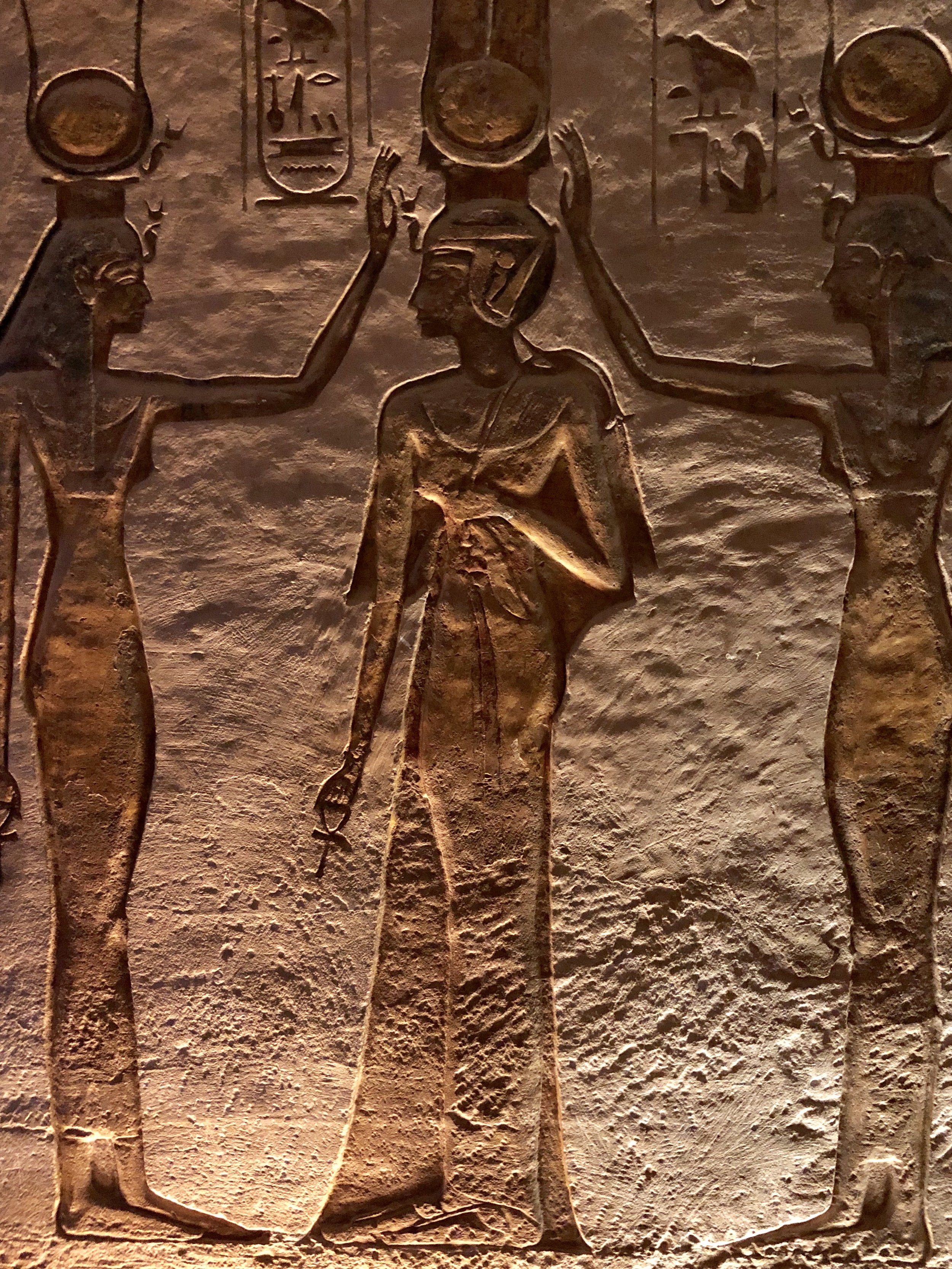
Nefertari is shown as a divine being, being crowned by the goddesses Hathor and Isis.
Fun fact: Abu Simbel isn’t what the complex was called in ancient times. In fact, it’s supposedly named after the local boy who led one of the archeologists to the site. Abu Simbel is a bit more catchy than the original name, Hut Ramesses Meryamun, the Temple of Ramesses, Beloved of Amun, if you ask me.

The entire temple complex was cut into pieces and relocated on higher ground to avoid it being flooded by the Aswan High Dam.
A MONUMENTAL RELOCATION PROJECT
The Abu Simbel you’re visiting today isn’t at the same spot it was in ancient times. The original site has been submerged beneath the waters of the newly formed Lake Nasser after the construction of the Aswan High Dam. What happened to the temple complex?
Egyptians (and UNESCO) couldn’t bear to have such a stunning monument lost beneath the water. So, from 1963 to 1968, teams underwent an impressive undertaking. They chopped up the entire temples into 16,000 or so blocks — and reassembled them like a giant-sized puzzle on an artificial mountain 200 feet higher.
Instead of repairing the sculptures — as mentioned, one of the colossi has lost its head (and upper body) — the project team chose to keep the temples exactly as they were before the relocation.
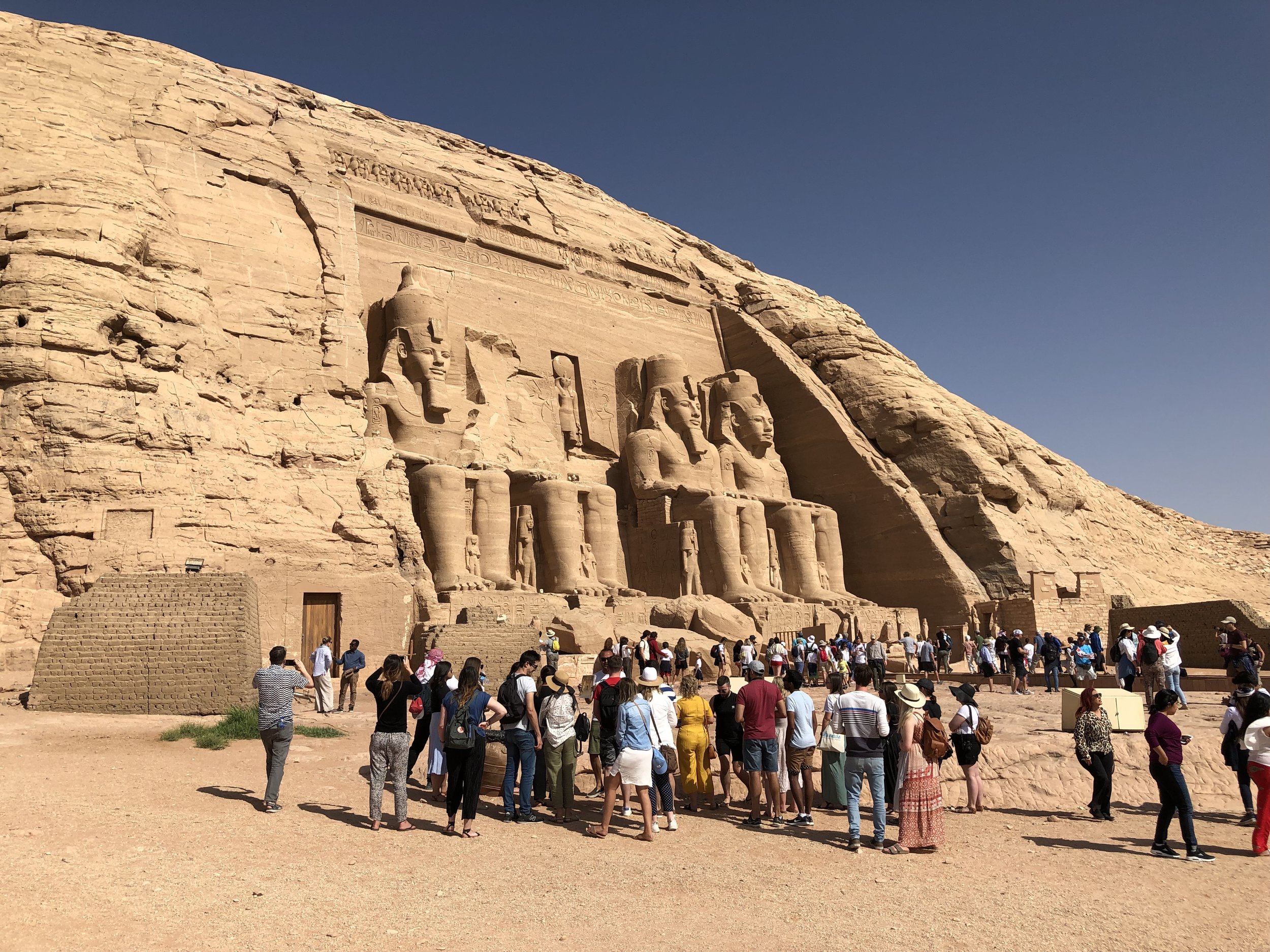
If you arrive close to opening time, you’ll be stuck with busloads of other tourists. But around noon, the complex was much less crowded.
VISITING ABU SIMBEL
If you’re staying in Aswan, chances are your guide will want to get an early move on. Abu Simbel is, after all, a three-hour drive away. But if you leave at the crack of dawn, around 6 a.m. like us, you’ll arrive at the same time all the massive tour buses pull in as well. That meant we arrived at the impressive edifice along with swarms of other visitors. There’s nothing that takes you out of the experience more than having to share an enclosed space with throngs of tourists taking selfies for Instagram and moving en masse all around you.
We suffered through a claustrophobic exploration of Abu Simbel, then went over to see the Nefertari temple. When we returned to Abu Simbel, it had largely emptied out since it was around noon. Only then did we experience the awe of this sacred space.
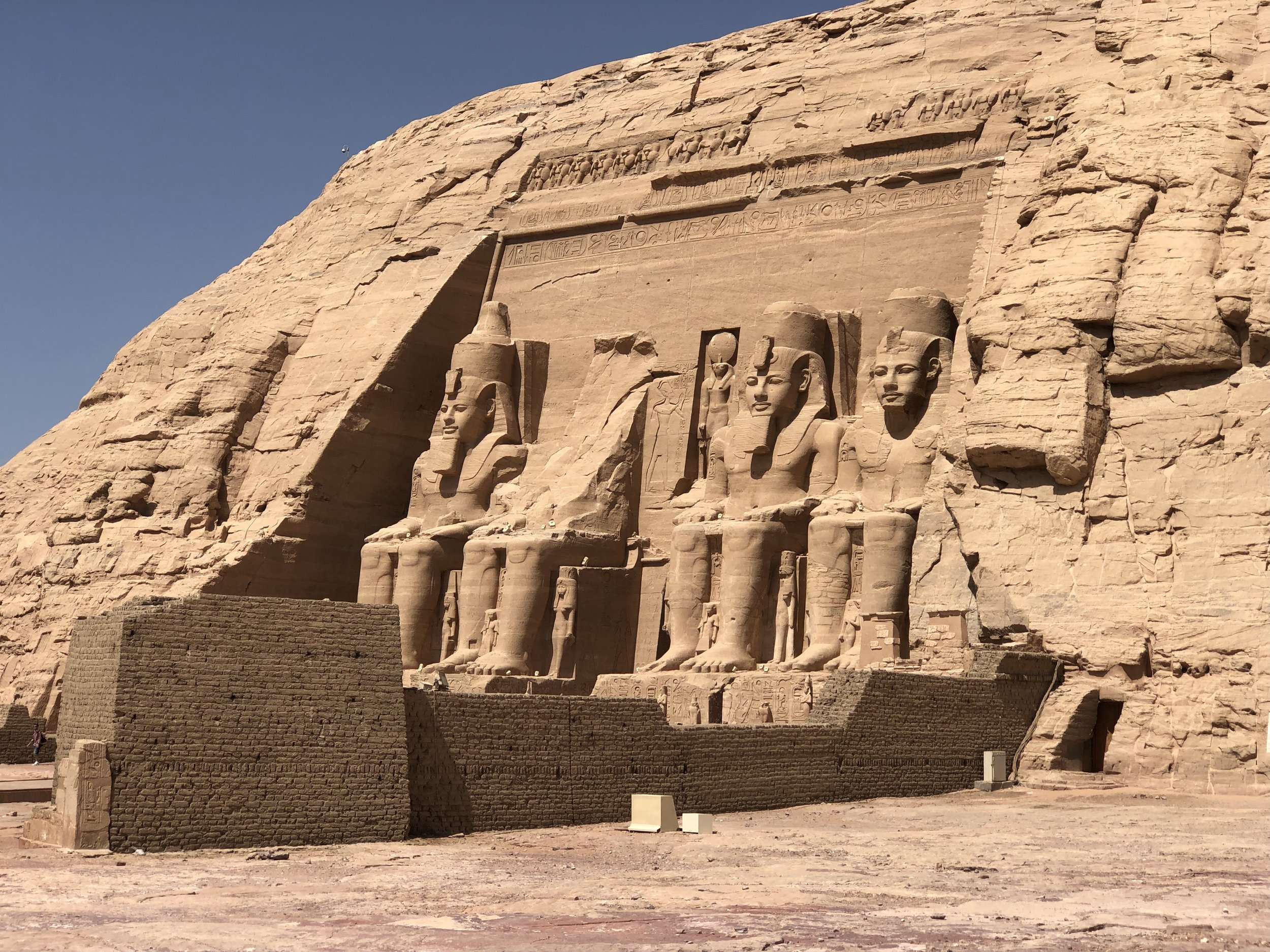
If you want to take a picture without swarms of tourists, snap one as you come back from Nefertari’s temple, where a low wall obscures the crowds.
In an effort to prevent congestion, guides can’t go in the temples, so Mamduh, from Egypt Sunset Tours, gave us the rundown and then set us free, meeting us back at the café near the entrance.
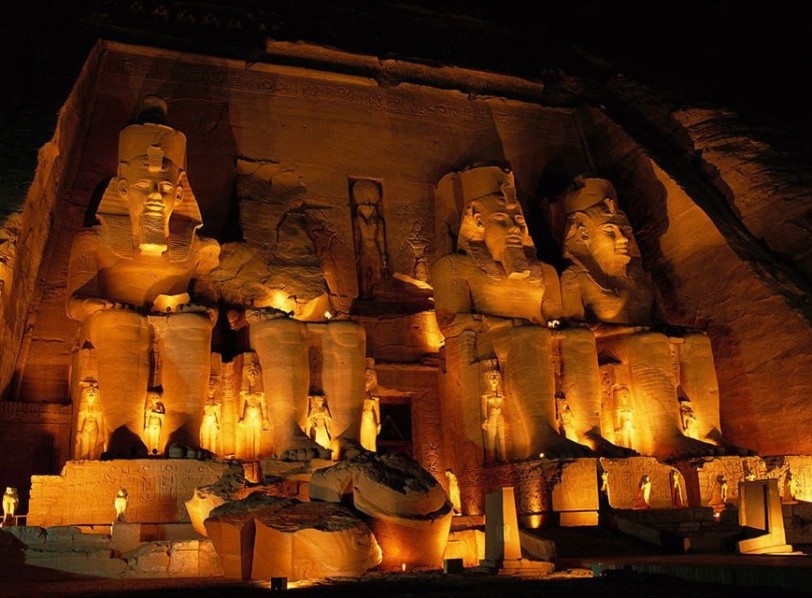
Admission costs 200 Egyptian pounds, and be sure to spring for the 300 L.E. photo pass. This was one of the sites where we saw guards forcing violators to delete the pics right off their phones.
Like most sites you’ll visit in Egypt, you have to walk through the bazaar on your way out. As we hurried through, a dagger with a curving horn handle caught my eye. Duke likes to joke that everywhere I go I look for daggers and dollies (it’s funny cuz it’s true). I negotiated a price of 350 L.E., or about $20. I could have probably gotten him to go lower, but I was OK with that price.
As we exited on the other side of the temple hill, a policeman smiled and began chatting with us. Of course we had no idea what he was saying, but it seemed like he wanted to pose for a picture with us (for a tip, naturally). He presented his machine gun like he was offering for us to hold it, but I hope I was wrong about that.